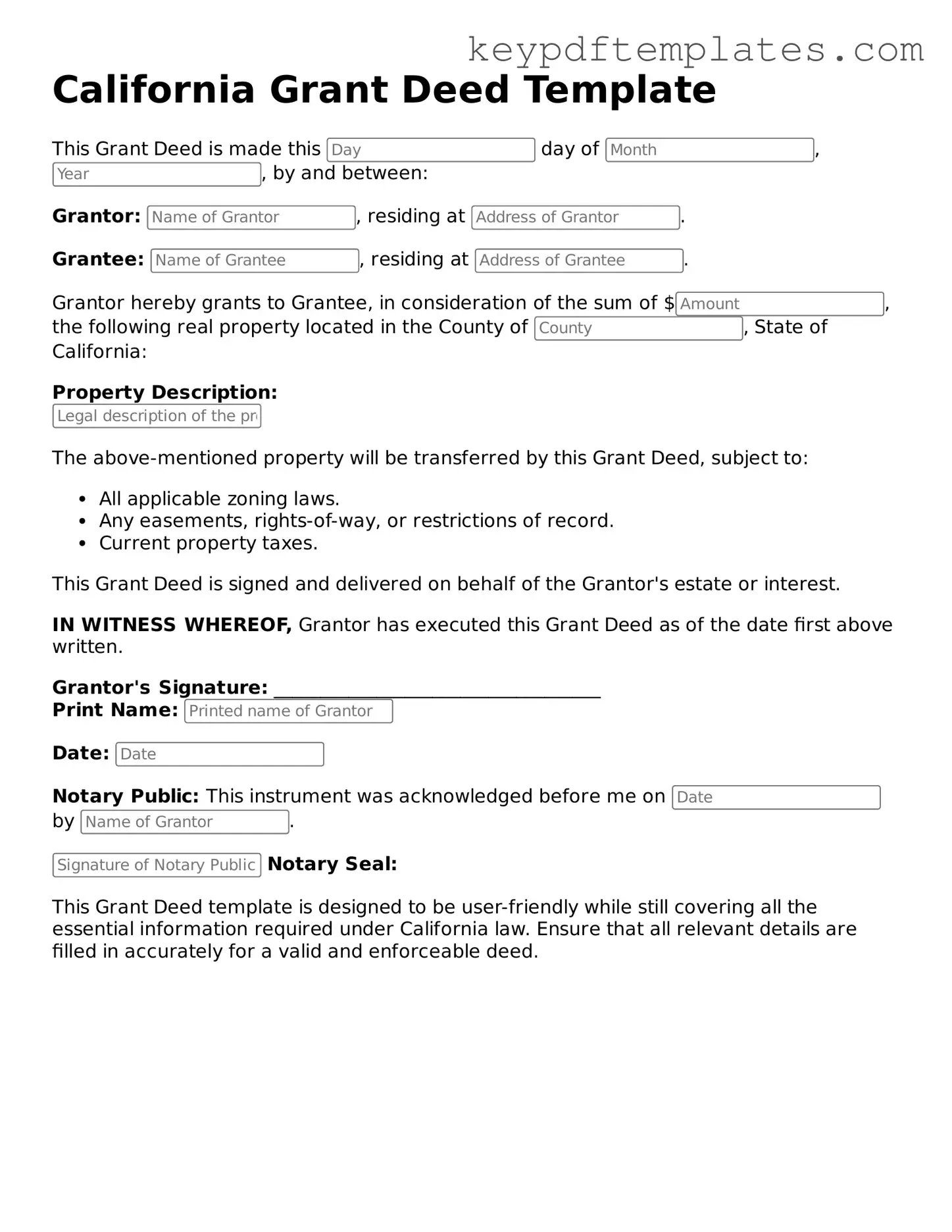Legal Deed Document for the State of California
A California Deed form is a legal document used to transfer ownership of real estate from one party to another. This form outlines the details of the transaction, including the parties involved and the property being transferred. Understanding the specifics of this form is essential for anyone looking to buy or sell property in California.
Modify Document Online
